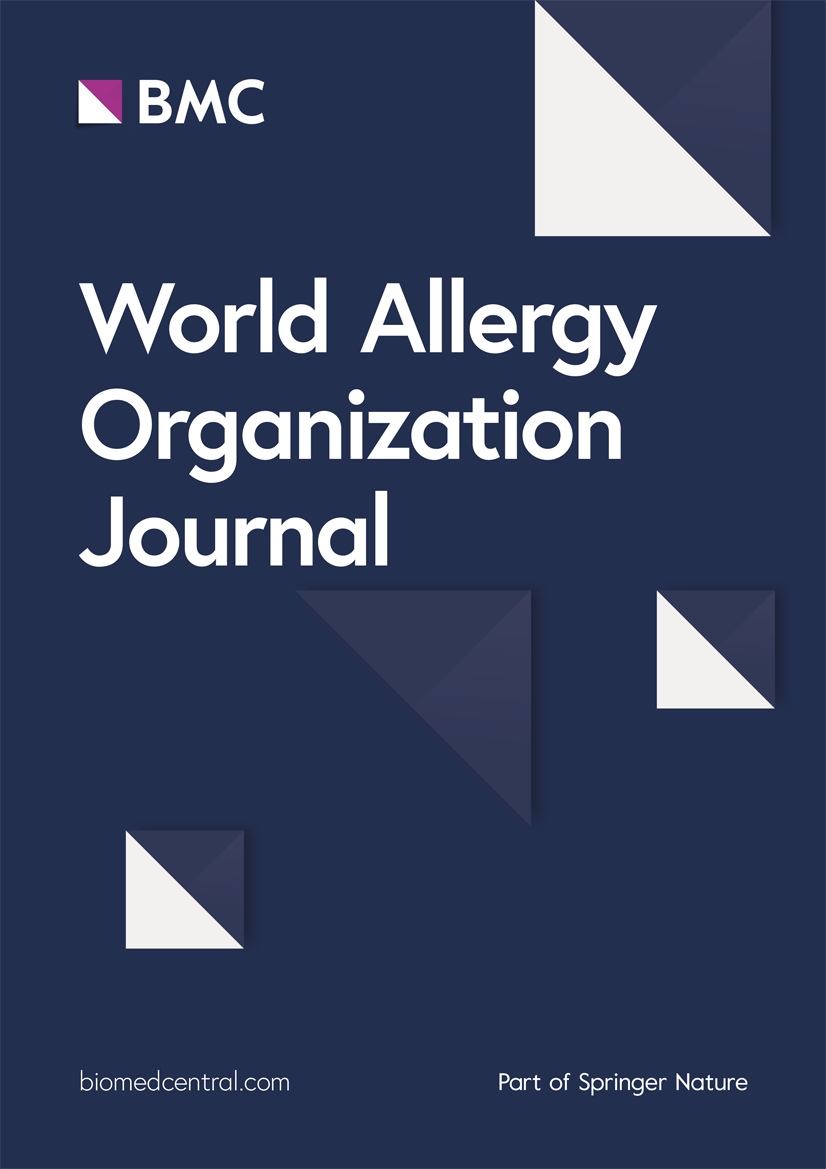过敏性疾病、嗜酸性粒细胞和骨质疏松的因果关系:一项孟德尔随机研究
IF 4.3
2区 医学
Q2 ALLERGY
引用次数: 0
摘要
背景变态反应性疾病与骨质疏松症之间的关系仍然存在争议。我们假设这种差异可能是由于在过敏性疾病和骨质疏松症的发病机制中起作用的中介。为了验证这一假设,我们使用孟德尔随机化(MR)分析来调查过敏性疾病、嗜酸性粒细胞和骨质疏松症之间的关系。方法本研究利用GWAS公开数据库的数据,包括3种过敏性疾病:哮喘、变应性鼻炎和湿疹。我们分别对过敏性疾病与嗜酸性粒细胞(包括嗜酸性粒细胞计数和百分比)、过敏性疾病与骨质疏松、嗜酸性粒细胞与骨质疏松的关系进行双向MR分析。我们对具有显著性的结果进行敏感性分析,并采用多变量孟德尔随机化(MVMR)分析对结果进行验证,以确保显著性结果的可靠性。结果两样本MR分析显示3种变应性疾病与嗜酸性粒细胞之间存在显著的双向因果关系。嗜酸性粒细胞与骨质疏松之间存在单向因果关系,嗜酸性粒细胞计数与骨质疏松相关(OR: 1.194;95% CI 1.064 ~ 1.339;Pivw <0.001)和嗜酸性粒细胞百分比与骨质疏松症相关(OR: 1.187;95% CI 1.057 ~ 1.332;Pivw & lt; 0.001)。然而,在多变量(MVMR)分析后,嗜酸性粒细胞百分比与骨质疏松症之间的关联不再显著。此外,没有观察到过敏性疾病与骨质疏松、骨质疏松与过敏性疾病、骨质疏松与嗜酸性粒细胞之间的因果关系。3种变应性疾病(哮喘、变应性鼻炎、湿疹)与嗜酸性粒细胞存在显著的双向潜在因果关系。2)。没有证据支持这三种过敏性疾病与骨质疏松症之间的因果关系,反之亦然。3)。嗜酸性粒细胞计数与骨质疏松可能存在单向的因果关系。本文章由计算机程序翻译,如有差异,请以英文原文为准。
Causal association of allergic diseases, eosinophils, and osteoporosis: A Mendelian randomization study
Background
The association between allergic diseases and osteoporosis remains controversial. We hypothesize that this discrepancy may be due to a mediator that plays a role in the pathogenesis of both allergic diseases and osteoporosis. To test this hypothesis, we used Mendelian randomization (MR) analysis to investigate the relationships among allergic diseases, eosinophils, and osteoporosis.
Method
This study utilized data from publicly available GWAS databases, including 3 allergic diseases: asthma, allergic rhinitis, and eczema. We conducted bidirectional MR analyses on the relationships between allergic diseases and eosinophils (including eosinophil counts and percentage), allergic diseases and osteoporosis, and eosinophils and osteoporosis, respectively. We conducted sensitivity analyses for results with significance, validated the findings using multivariable Mendelian randomization (MVMR) analysis to ensure the reliability of the significant results.
Results
Two-sample MR analysis revealed significant bidirectional causal relationships between the 3 allergic diseases and eosinophils. A unidirectional causal relationship was found between eosinophils and osteoporosis, with eosinophil counts associated with osteoporosis (OR: 1.194; 95% CI 1.064 to 1.339; Pivw <0.001) and eosinophil percentage associated with osteoporosis (OR: 1.187; 95% CI 1.057 to 1.332; Pivw <0.001). Sensitivity analyses indicated no pleiotropy, However, the association between eosinophil percentage and osteoporosis was no longer significant after multivariable (MVMR) analysis. Additionally, no causal effects were observed from allergic diseases to osteoporosis, from osteoporosis to allergic diseases, or from osteoporosis to eosinophils.
Conclusions
1.) There is a significant bidirectional potential causal relationship between the 3 allergic diseases (asthma, allergic rhinitis, eczema) and eosinophils. 2.) There is no evidence to support a causal relationship between the 3 allergic diseases and osteoporosis, and vice versa. 3.) There is a unidirectional causal relationship may exist from eosinophil counts to osteoporosis.
求助全文
通过发布文献求助,成功后即可免费获取论文全文。
去求助
来源期刊

World Allergy Organization Journal
Immunology and Microbiology-Immunology
CiteScore
9.10
自引率
5.90%
发文量
91
审稿时长
9 weeks
期刊介绍:
The official pubication of the World Allergy Organization, the World Allergy Organization Journal (WAOjournal) publishes original mechanistic, translational, and clinical research on the topics of allergy, asthma, anaphylaxis, and clincial immunology, as well as reviews, guidelines, and position papers that contribute to the improvement of patient care. WAOjournal publishes research on the growth of allergy prevalence within the scope of single countries, country comparisons, and practical global issues and regulations, or threats to the allergy specialty. The Journal invites the submissions of all authors interested in publishing on current global problems in allergy, asthma, anaphylaxis, and immunology. Of particular interest are the immunological consequences of climate change and the subsequent systematic transformations in food habits and their consequences for the allergy/immunology discipline.
 求助内容:
求助内容: 应助结果提醒方式:
应助结果提醒方式:


